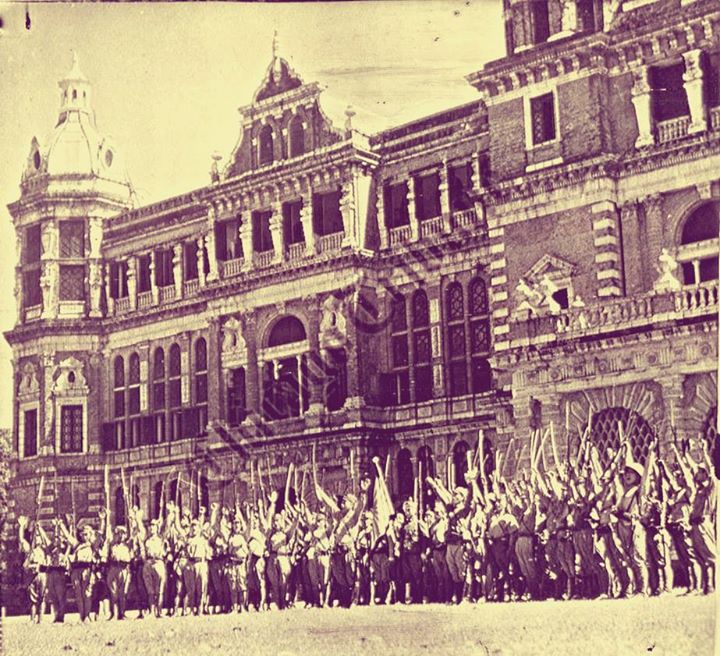
8 March 1942
Fall of Rangoon
On 8 March 1942, Rangoon fell to the Japanese after two and a half months of heavy aerial bombing. At least 2,000 civilians were killed by the bombing, and another 400,000 became refugees. In a “scorched earth” policy, the city’s dockyards, factories, oil refinery, and railways were all destroyed by the colonial authorities before they evacuated. Hundreds of offices and shops were looted by ordinary people. The fighting retreat from Rangoon (first to Mandalay and then to Assam) over the next three months would be the longest ever in British history. This “scorched earth” retreat and the subsequent battles to take back the country led to one of the most advanced countries in Southeast Asia becoming an economic ruin.
The phogotraph shows victorious Japanese troops in front of Government House (near where the Region Hluttaw building is now), Rangoon. Three and a half years later, in August 1945, Imperial Vice Chief of Staff Lt. General Torashiro Kawabe would formally sign Japan’s surrender inside the same building.